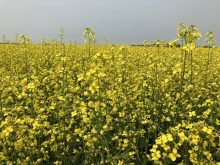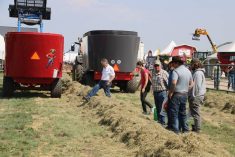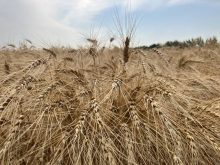SASKATOON – Sask-atchewan’s wild fruit is sweet, but the business opportunity it could create in the province may be sweeter.
A study ordered by the Saskatchewan Indian Agriculture Program looked at 12 wild fruits that grow in the province. After talking with berry pickers, food producers, and industry analysts, Solutions 2000+ Management Consultants reported chokecherries have the most potential of the province’s wild fruits.
“If we promote that, we may develop a cottage industry,” said Yzzat Desouki from the Indian agriculture program.
Chokecherries are abundant, have a stable yield each year and fit into the consumer trend towards natural, healthy products. It would take a steady supply of about half a million kilograms of chokecherries annually to make chokecherry juice commercially. It is the most promising product, according to analysts
Read Also

Supreme Court gives thumbs-up emoji case the thumbs down
Saskatchewan farmer wanted to appeal the court decision that a thumbs-up emoji served as a signature to a grain delivery contract.
Unfortunately, the report said, “the Saskatchewan wild fruit industry is in a position where it is hard-pressed to supply the commercial market with consistent volumes and quality berries.”
The owner of a Prince Albert company that buys wild fruit from pickers and sells it to processors disagrees.
“If the berries are out there, we certainly have a good body of pickers in our area interested in picking them,” said Len Donais, owner of Northern Wild Harvest.
Donais said the problem is the harsh prairie climate.
“It’s so variable, you can’t predict. It depends on the kind of spring we’ve had.”
Last year Donais had a relatively slow season compared to the year before when he had numerous orders for blueberries and chokecherries. One company ordered 130,000 pounds (59,000 kg) of chokecherries alone. He had no trouble filling it.
Like most, that order came from outside the province. Donais would like to see more value-added berry processing in Saskatchewan.
Desouki said encouraging value-added processing is part of the Indian agriculture program’s strategy for chokecherries and other fruit.
Years ago people were encouraged to harvest. The agency set up collection points all over the province. While it initially lost money, today it is self-supporting. If there was more processing going on, Desouki thinks “it might take off really nicely in the next little while.”
Pilot projects
Pilot projects to grow chokecherries in orchards are planned in 1996. Desouki said planting will begin this spring on the Kinistino Reserve near Melfort. And Donais is “looking very seriously” at planting shelterbelts of chokecherry bushes.
Such commercial orchards solve one of the problems faced by the wild fruit industry. With the potential to harvest more than two million kg of chokecherries annually, damage to the environment is a serious risk. Proper field management and legislation restricting where people can pick fruit will help to prevent damage.
Other hurdles for the industry are a lack of standards for the quality and handling of wild fruit and variations in pricing.
















